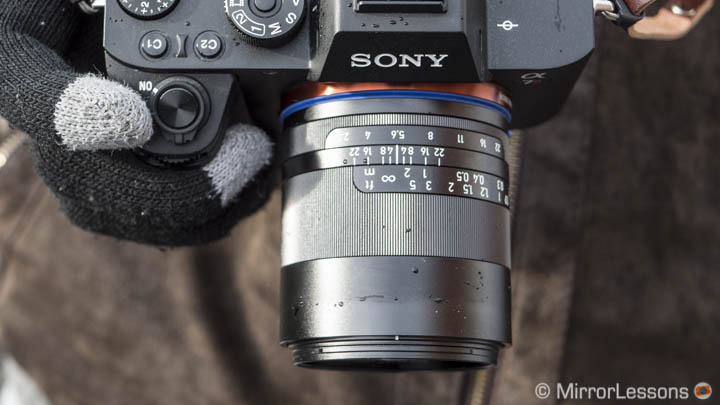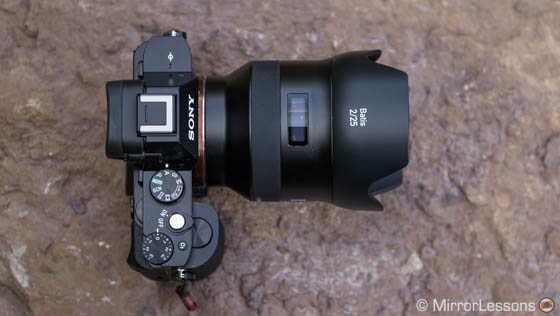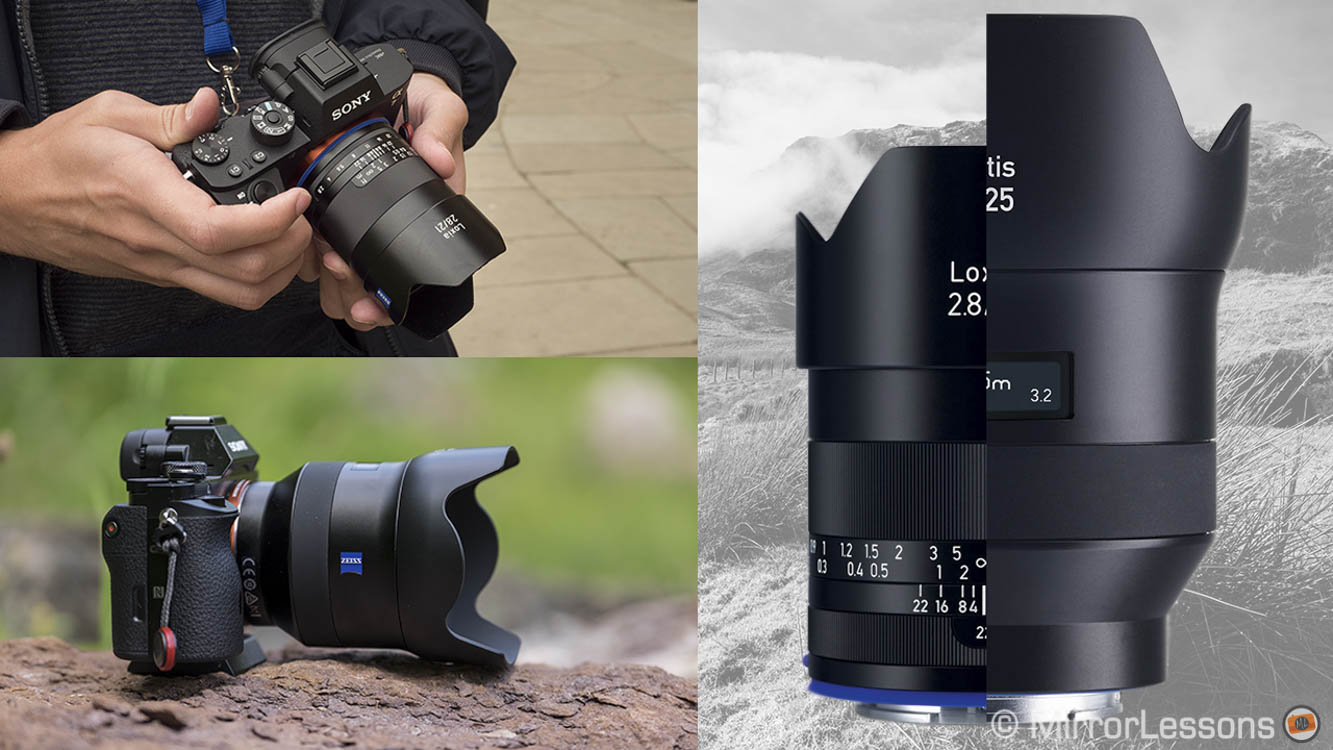Since publishing my review of the Zeiss Loxia 21mm, I’ve received several comments and emails asking about the differences between this wide-angle prime and the Batis 25mm. In my opinion, these two lenses are very different in terms of how they should be used out in the field but I can understand the doubt. As of now, they are two of only three wide angle prime lenses available for the Sony FE mount system (excluding all the possibilities with adapted lenses of course). So I decided to extend my thoughts to a more complete analysis with the hope that it will satisfy the curiosity of other Sony FE users as well.
Before starting there is an important point I want to highlight: I reviewed both lenses but at separate times. You can find the dedicated articles below:
This means that you won’t find side-by-side comparisons featuring the same scene. If I was talking about two lenses with the same focal length, this would be more of a problem and I probably would have skipped publishing this article altogether. However, in this case, I feel that it is less of an issue because of that 4mm difference, which is quite relevant when talking about wide angle lenses.
So while this comparison will discuss the optical performance of each product, it will primarily focus on my personal experience with both lenses.
Loxia 2.8/21
- Focal length: 21mm
- Maximum aperture: 2.8
- Minimum aperture: 22
- Angle of view: 91°
- Closest focusing distance: 25cm
- Lens configuration: 11 elements / 9 groups
- Special elements: 4 special glass with anomalous partial dispersion, 1 Aspherical element
- Lens surface coating: Yes (T* Coating)
- Coverage at close range: 281 x 187 mm (11.06 x 7.36″)
- Optical Image Stabilizer: None
- Dimensions: φ62.1 Ø, 85 mm
- Filter diamater: 52mm
- Weight: 394g
Batis 2/25mm
- Focal length: 25mm
- Maximum aperture: 2
- Minimum aperture: 22
- Angle of view: 82°
- Closest focusing distance: 20cm
- Lens configuration: 10 elements / 8 groups
- Special elements: 2 Aspherical, 2 Special Glass, 1 Aspherical special glass elements
- Lens surface coating: Yes (T* Coating)
- Maximum image magnification: 1/5.2
- Optical Image Stabilizer: No
- Dimensions: φ78mm Ø, 92 mm
- Filter diamater: 67mm
- Weight: 335g
Table of Contents
About the angle of view: 91° vs 82°
For me the primary reason to choose one lens over the other is the field of view they give on the 36x24mm sensor of the Sony A7 series. The 4mm gap results in almost 10° of difference which may not seem like a lot at first but in reality it does affect your composition and more importantly, the way you frame it. This is especially important for architectural shots (outdoor and indoor) and other situations where you don’t have the freedom to move about as much as you would like but want to include as many elements in your frame as possible.
To give you a visual comparison, I prepared a few examples below. The images were shot with the Loxia 21mm (no crop added in post) but I included a white rectangular frame that corresponds approximately to the Batis 25mm field of view.
In the first two shots we can see that the difference in composition is not so big. Certainly the Loxia gives you some extra space along the edges and a wider view of the architectural elements. I like the 21mm focal length because it doesn’t distort the geometrical lines very much despite the wide angle of view. It still feels very natural.
In the first shot (seen below) I couldn’t walk any further back than this because of a ramp that leads underground.

In this second shot I would have had room to walk a few steps backward and achieve a similar frame with the Batis.

The following two shots would have been trickier to achieve with the Batis 25mm. There wasn’t much space to move about and I had to squat as low as possible to get these two shots. With the Batis I would have lost much of the spacial perception and the leading lines of the arch and columns. In fact, I probably would have ended up discarding the pictures completely.


The following shot was taken inside the renovated Birmingham New Street station. You can notice that even with the Loxia 21mm, my angle of view is a little too narrow. Here again the Batis 25mm wouldn’t have revealed enough of the interesting architecture of the roof.

The examples above shows that the 21mm can indeed be too narrow in some spaces. Some photographers would probably prefer a wider solution like an 18mm.
For landscapes the difference can matter less (if not for pure personal/artistic reasons) as you usually have more margin to move and position yourself in the optimal spot. But here as well there can be some occasions where the Batis can feel too narrow.


These examples are interesting because they reveal that between 21mm and 25mm, there is a subtle line. Anything longer than 21mm starts to feel too narrow for certain applications, while up to 21mm the angle of view is still acceptable.
Where I think the Batis lens works best is for street and events where there is a human presence and what’s happening in the scene has more importance. In these cases, you have more room of manoeuvre and choose how many people to frame and how close you want to be to the action. With the Loxia lens the field of view can often feel too large. The Batis can also be interesting for events when you need to frame a group of people without having too much perspective distortion at the edges.

One last note about the Batis 25mm is that it can be interesting on a Sony APS-C camera like the a6000. The field of view would be approximately 60° which is in between a 35mm and a 50mm lens on 36×24 format (the exact equivalent focal length would be 37.5mm). As such, if you own Sony full frame and APS-C cameras, the Batis can be more versatile with both systems. It is relatively light and not too large so it remains comfortable on the APS-C series as well.
Of course the Loxia can be used on an APS-C sensor as well but in my opinion it is less interesting. You would get a 31.5mm equivalent focal length but I would rather have a 24mm or 35mm equivalent than something in between.
Autofocus vs Manual Focus
The second key difference between these two lenses can be found in the focusing options.
The Loxia 21mm is a manual focus lens designed with an all-metal build and two mechanical rings. Focusing manually could discourage some people but honestly it isn’t that difficult with this lens. First, being a wide angle lens means it is more forgiving than longer lenses when it comes to focus accuracy (you get more depth of field). Second there is a distance scale on the barrel that can be very helpful for architecture and landscapes so you don’t have to worry about focusing at all once it is set. If you still have doubts, turning the focus ring can activate focus magnification automatically on the LCD/EVF and there is also focus peaking. It is just a question of getting used to it really.


The Batis 25mm has autofocus and that can make a difference if you use the lens for weddings and events. It is fast and silent on the A7 cameras. There is an OLED screen on the barrel to show the distance scale when you are in manual focus mode. However the focus ring is a “fly-by-wire” type which means it isn’t as pleasant and precise as the mechanical ring of the Loxia lens. What’s more, some people don’t appreciate the rubber around the ring. Personally I don’t mind it but it is true it can attract more dust. The only time I used manual focus with this lens was for the Milky Way shot you see below.

Optical quality
You might wonder if there is a relevant difference when it comes to pure optical quality because it can also influence your decision. As I said at the beginning I don’t have side-by-side images to show so I will only highlight their strengths and weaknesses. You can refer to my full reviews (21mm and 25mm) for more information.
The Loxia lens is slower by one stop but its performance is already excellent at f/2.8, both at the centre and in the corners. I would say it becomes perfect from f/4.

Click on the image to view the full res set.
The Batis 25mm has one extra stop of light and that can be an interesting factor for someone in need of a fast lens for low light situations. Sharpness at f/2 is good but gets better from f/2.8 with the sweet spot being around f/5.6. The corners are good from f/4. The faster aperture also causes more vignetting wide open.

Click on the image to open the full res image.
The Loxia 21mm can focus as close as 25cm while the Batis can go 5cm closer. If we add the longest focal length into the equation, the Batis has a higher magnification factor. Again this is one of the reasons the Batis 25mm can be more versatile for events and various genres. Both have a nice creamy bokeh when focusing close.
In the example below of the dragon statue, I highlighted the 25mm frame and also showed how I would have composed the shot by reducing the space on the left. I could have focused close and the perspective distortion would have been less severe. So overall the Batis 25mm is more interesting for close-up shots.

Below is an example with the Batis lens at f/2 that shows the bokeh capabilities.

Click on the image to open the full size version.
I almost needed a magnifying glass to find any traces of chromatic aberration with the Loxia lens. You can detect it more easily with the Batis especially in the corners. Both lenses handle flare really well and have the Zeiss T* coating. There is some barrel distortion with both lenses. On the Loxia it is very minimal while it is slightly more pronounced on the Batis. However distortion, CA and vignetting can all be easily corrected with a Raw software like Adobe Lightroom so none of these aspects caused me problems in real life.
Conclusion
Even with side-by-side images, I am sure that my analysis above wouldn’t not change much. Both lenses perform really well. If we talk about pure optical performance alone, I find the Loxia 21mm nearly perfect. The Batis 25mm is nearly as good but let’s not forget that we are talking about two different lens designs here.
Both lenses are well-built but my personal preference goes to the Loxia 21mm because of its metal chassis and mechanical rings. It is a modern lens with a classic feel. Plus I like having an aperture ring, something that the 25mm lacks. The Batis is a modern lens and instead of a distance scale marked on the barrel it features an OLED screen that gives you the information on focus distance and depth of field. I found it comfortable for night shooting especially.
The truth is that some photographers could fit both lenses inside the same bag. But if I had to define their ideal applications, these would be my personal recommendations:
- Loxia 21mm for architecture and landscapes
- Batis 25mm for street, reportage, weddings and genres where the human presence has more importance.
Of course nothing is stopping you from using the 21mm for street and the 25mm for landscapes either.
One final note concerns the price. The Loxia 21mm is more expensive so if you are still having a hard time deciding, go with the Batis 25mm and save some money.
If you are not in a hurry, perhaps you can wait a little longer. Voigtlander will release some E-mount ultra wide angle lenses in the spring and I am sure that new Batis lenses will start to surface soon!

I kept the 25mm field of view as reference (approx, 82°) for the white rectangles. Where did you read about the 23mm FL? I didn’t notice that when reviewing the Batis lens but of course without a side by side comparison it is difficult to confirm this.
It is said the Batis is really more like 23mm FL than 25…If this is true, would your rectangles be overestimating the difference in coverage of the two lenses?
Unfortunately no. In the two weeks I spent with the lens I never got a clear sky. Funny thing is that the day I had to send the lens back was followed by a clear sky in the evening!
Mathieu, did you test the 21mm for coma at f2.8? If there was any it would be noticable for astrophotography?